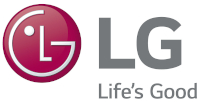Harris and LG Demonstrate Scalable Full-Channel Mobile DTV Technology
Monday, April 12th, 2010
Flexible Spectrum Option Delivers Even More Over-the-Air Mobile TV Programs Than Possible with Traditional Mobile DTV Broadcasting
LAS VEGAS — With an eye on the future for spectrum owners interested in reaching millions of mobile TV viewers, Harris Corporation (NYSE: HRS) today took the wraps off its latest technological innovation developed with LG Electronics (Seoul:066570) — mobile digital television delivered in “Scalable Full-Channel Mobile Mode.” The demonstration features functioning hardware for both transmission and reception of mobile DTV signals using enhanced technology.
The new system enables as many as 16 different video programs to be sent in the same 6 MHz bandwidth utilized by a TV broadcaster. It has been proposed for standardization to the Advanced Television Systems Committee (ATSC) and is being unveiled this week at the 2010 National Association of Broadcasters (NAB) convention.
Current TV broadcasters are required by the Federal Communications Commission to offer at least one standard-definition digital TV program in their 19.4 Mbps broadcast bitstream. Owners of other 700 MHz spectrum, however, have more flexibility. The Harris/LG demonstration will show spectrum owners and all terrestrial broadcasters how to maximize spectrum use with a greater variety of TV programs to reach mobile viewers “on the go” as viewing habits change.
This demonstration can be seen in the ATSC-OMVC Mobile Digital TV Pavilion (Booth SU5217A, South Hall, Las Vegas Convention Center) during the entire 2010 NAB Show.
Multiple Mobile Programs on One Channel
To achieve its robust approach to Scalable Full-Channel Mobile Mode, LG and Harris engineers have trimmed the main digital program to enable a mere trickle of data — enough to advertise available mobile programs on the service to in-home viewers. Most of the 19.4 Mbps bitstream in the 6 MHz TV channel is then cleared for transmission of various mobile programs, which can all be beamed from the same broadcast infrastructure.
“We realize there are applications for digital broadcasting that go far beyond the services transmitted by TV stations,” said Dr. Jong Kim, president of LG Electronics’ U.S. R&D lab. “Companies that own 700 MHz spectrum are beginning to ask how they might put the power of ATSC mobile digital broadcasting to use, and we’re responding by creating a new method of utilizing digital transmission to transmit even more programs. With our Scalable Full-Channel Mobile Mode system, we can offer multiple programs for mobile devices and a ‘barker program’ that can be seen by in-home viewers.”
The LG-Harris Scalable Full-Channel Mobile Mode is designed to be compatible with the ATSC A/153 Mobile DTV Standard adopted by the ATSC last October. It will offer non-traditional broadcasters an effective way to reach millions of mobile, portable and handheld devices.
“LG is committed to providing reception chips to equip receiving devices for Scalable Full-Channel Mobile Mode within four months of standard adoption,” Dr. Kim said. “Co-developed by LG, Zenith and Harris, this technology shows how Mobile DTV can be applied to help non-traditional broadcasters reach the viewing public. We’re using commercially available Harris transmission equipment and LG Mobile Digital TV receivers — such as portable TVs, netbook computers and prototype mobile phones — to show how spectrum owners might offer multiple programs of diversified content.”
Significant Progress Toward Commercialization
While the demonstration is a prototype, “the finished product will require nothing more than a software upgrade” for Harris Mobile DTV equipment owners, according to Jay Adrick, vice president of broadcast technology for Harris Corporation.
“We’re already working with a customer, and there are others operating in the 700 MHz spectrum who plan to launch mobile services that are compatible with the ATSC transmission system,” Adrick said. “We believe that Scalable Full-Channel Mobile Mode transmission will come to market rather quickly, once it is standardized. These are changing times for broadcasters, and they need every tool that they can get to be competitive and to move toward the types of services that people want in the future.”
“This is an extension of the ATSC A/153 Mobile DTV standard, so there’s a lot of commonality with what broadcasters are already planning to do,” Adrick added. “To achieve the Scalable Full-Channel Mobile Mode, there are, however, some significant changes in coding rate and in the block formats that are used to generate the various segments of the mobile signal.”
The technology developed by Harris, LG and Zenith is a leading contender in the ATSC Scalable Full-Channel Mobile Mode standardization process. An ATSC “Candidate Standard” could be adopted in the next several months.
Latest News
- Barb to start reporting TV-set viewing of YouTube channels
- SAT FILM selects multi-DRM from CryptoGuard
- Qvest and ARABSAT to launch OTT streaming platform
- ArabyAds & LG Ad Solutions partner with TVekstra in Turkey
- Freeview NZ satellite TV service to move to Koreasat 6
- Comscore expands YouTube CTV measurement internationally
